I don’t know about you, but I used to fear church ceremonies because I didn’t know how to light them or what my camera settings should be. I mean, you can’t ask for a more iconic, spiritual, and classically beautiful setting to pledge yourself to your soulmate than in a beautiful church like the one below, BUT it’s also one of the toughest ceremonies to photograph!
You know the churches I mean, right? They’re beautiful but dark. They don’t have natural light because of the stained glass. There are lots of glowing yellow incandescent lights on the altar and guests seated in pews that might as well be a black hole. Not to mention you show up minutes before the bride and have to lock down settings super fast. Oh, and you probably can’t use flash because you’re in a church and they often have strict rules against using flash during the ceremony. Eek! This is when my palms would start to sweat and I’d fight off panic as I scrambled to figure something out before the bridesmaids started walking down the aisle. You know this feeling too, right?!
I knew there had to be a better way. A way to quickly hone in on my ideal manual mode settings for church weddings so I could capture those tricky ceremonies beautifully for my couples. Over the years I’ve developed a set of starting points that take the guess-work out of finding my settings and allow me to hone my settings quickly for each wedding day scenario – especially those beautiful and tough church ceremonies.
Yes!
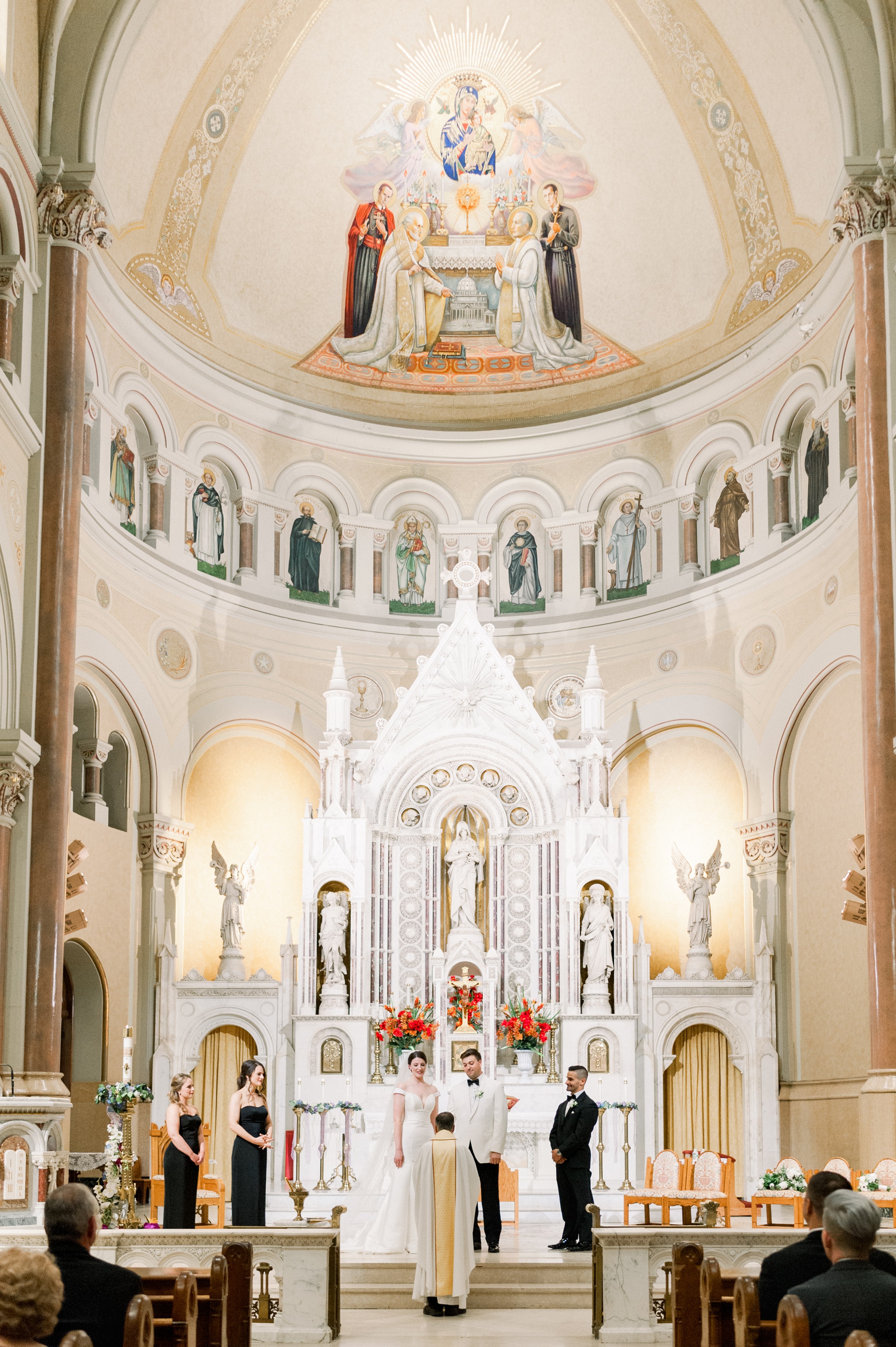
Let’s dive into the starting manual mode settings for church ceremonies that I use now and why they work as a way to quickly fine tune my settings on the fly:
Manual Mode Starting Settings For Churches
ISO 2500 f/2.8 SS 1/200 WB 3200
ISO
Even though the church itself is often quite dark, the altar is usually well lit. 2500 ISO is a nice middle ground that allows me to properly expose the church altar without losing the highlights. I can then quickly adjust my shutter when I turn and grab photos of the reactions from parents in the first few rows. In some cases, I pop my ISO up to 3200, but starting at 2500 lets me fine tune quickly.
f/stop
I list 2.8 as my starting setting because I’m almost always using my 70-200 during church ceremonies and that is as wide open as it gets. I’ll go as low as 2.0 with my 35mm. By stopping down as low as possible I let in as much ambient light as possible.
Shutter Speed
To avoid camera shake (especially with my 70-200) and make sure hands in motion aren’t blurring, I start at 1/200. I adjust to 1/400 for the altar or down to 1/125 for people sitting in the pews as needed.
White Balance
Last but certainly not least is the setting for Kelvin white balance. Kelvin gives me the most possible control to reign in the yellow glow of incandescent lights. 3200 Kelvin should bring the yellow glow of incandescent lights to a slightly warm, but fairly neutral clean light. And with only a slight adjustment, you can fine tune the look!
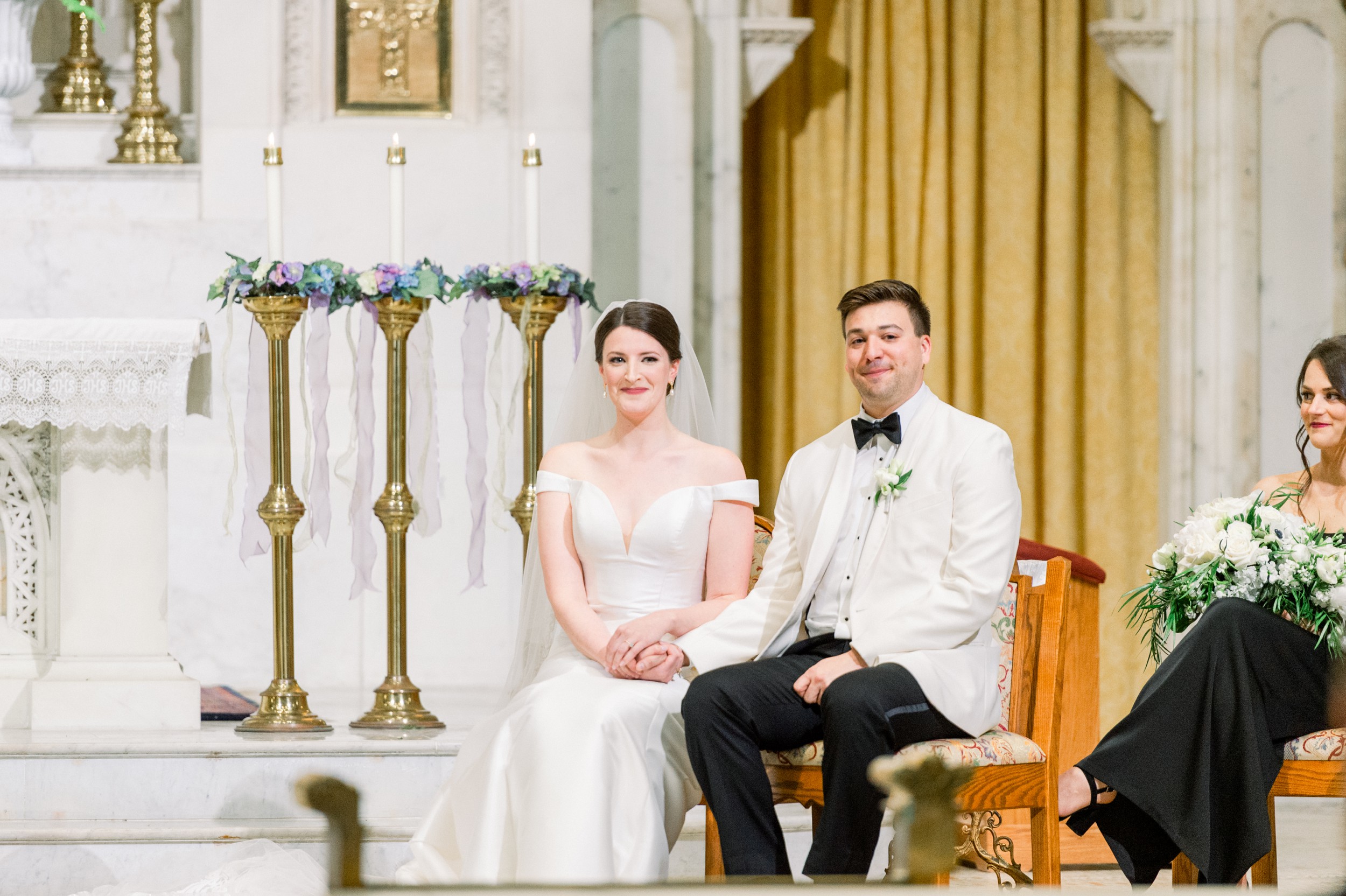
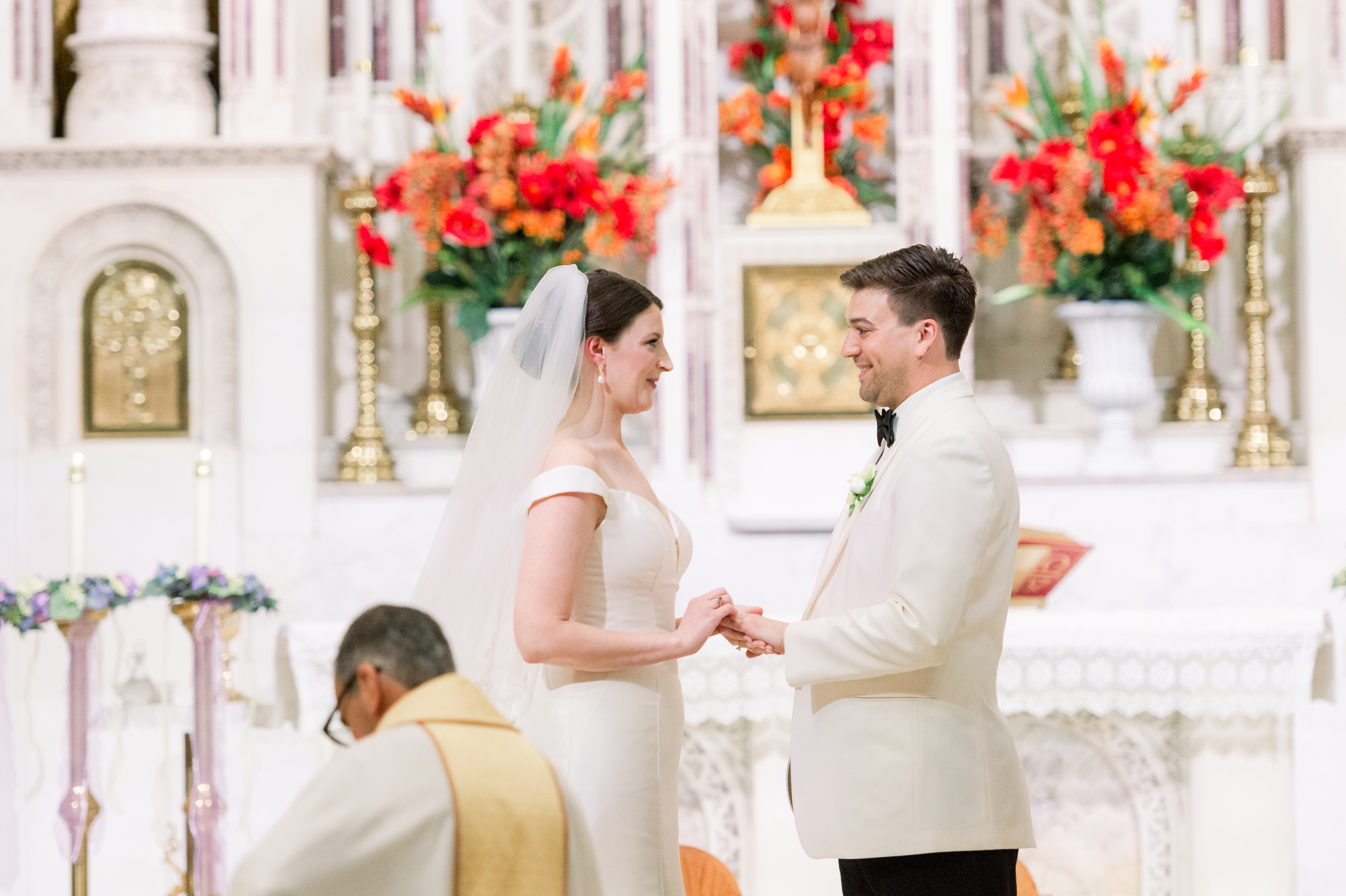
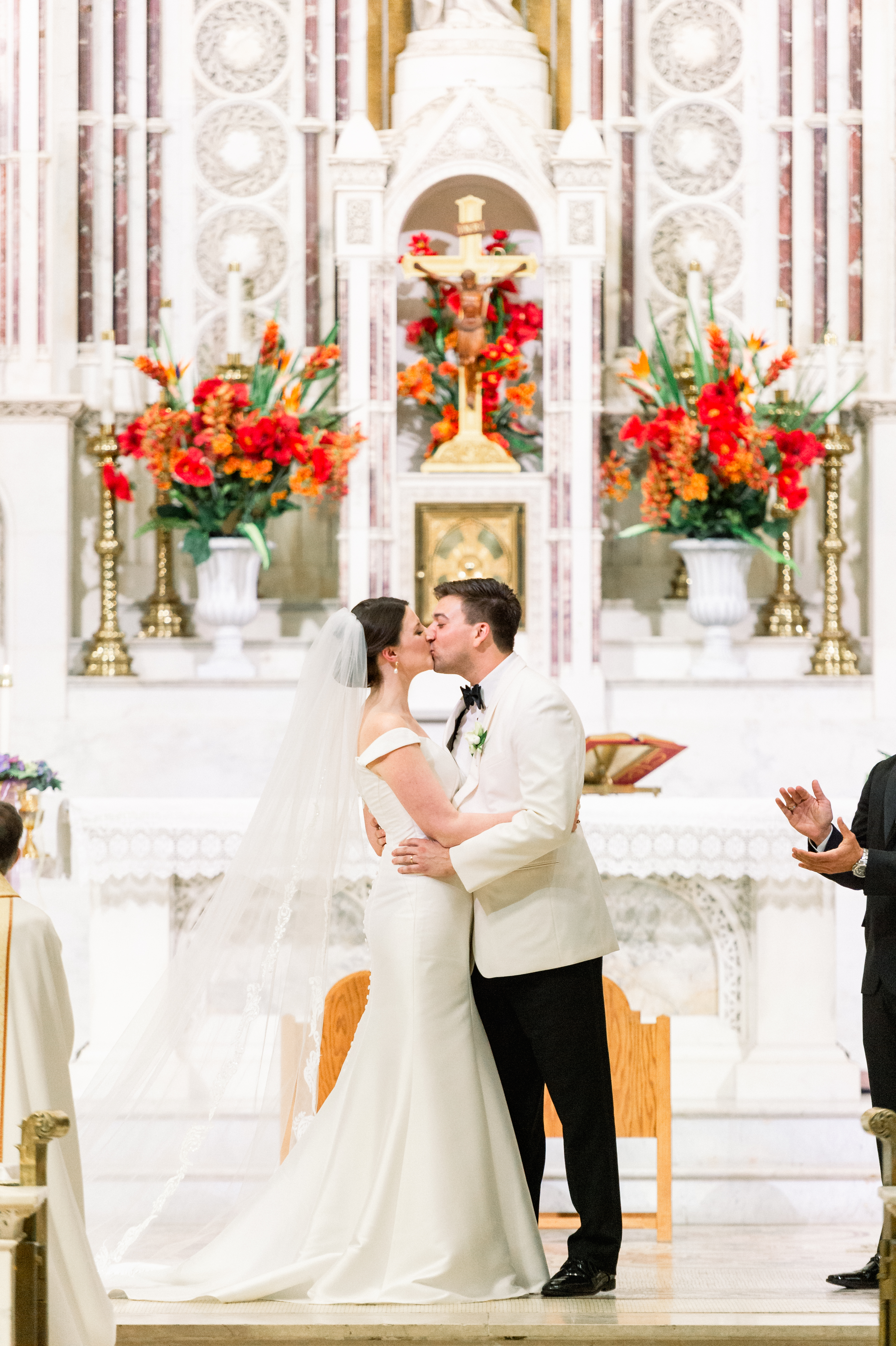
Download My Free Manual Mode Pocket Guide!
There you have it – my manual mode camera settings for church wedding ceremonies! I hope these starting setting will ease your stress and give you confidence to capture even the darkest of church ceremonies in manual mode! And if more starting settings like these could help you all wedding day long – download my free Manual Mode Pocket Guide! Inside you’ll find stating settings for every wedding day scenario from getting ready through the reception!
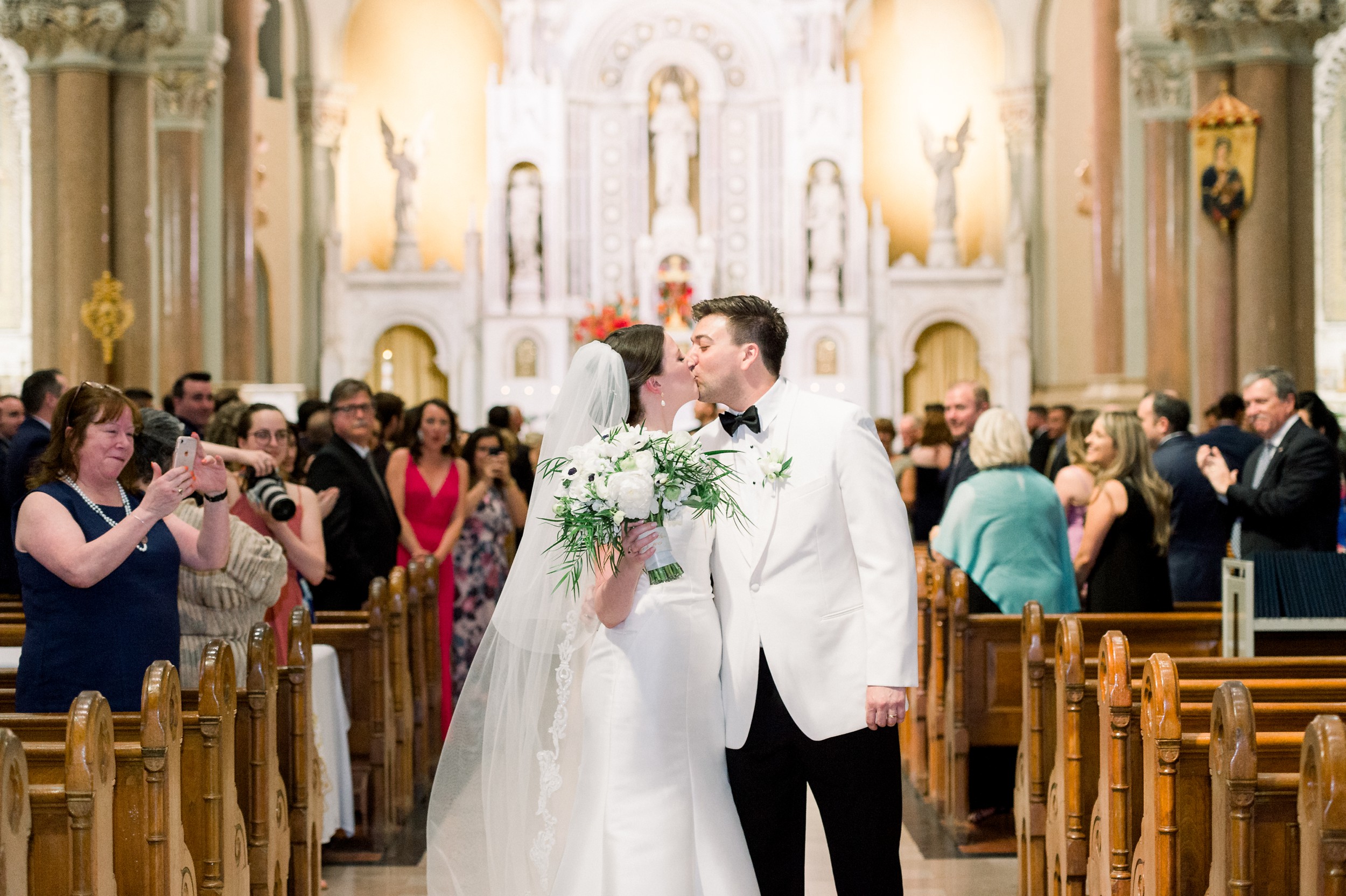
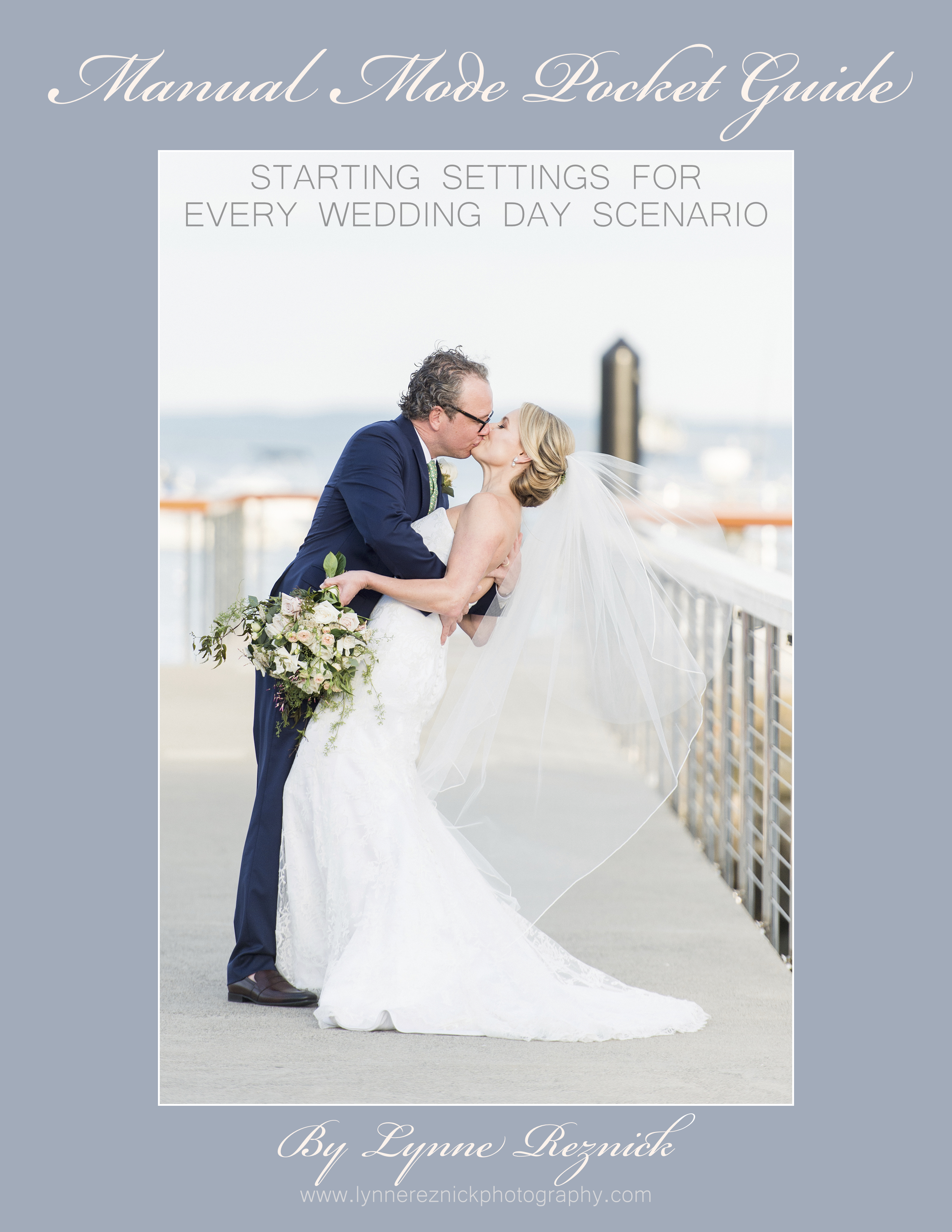
Thank you for sharing this process. Very informative and direct to the point. Will be using October 24th. Best Regards Rich
Hi Rich! I’m so glad to hear that you found this post on church ceremonies helpful! Good luck with your wedding this weekend! I also have a new course launching on Tuesday that you might be interested in – it’s called The Wedding Client Experience Academy and it’s full of really thoughtful and actionable content. If you think it would be helpful I’d love to have you join! You can find more info at http://www.lynnereznickphotography.com/wedding-client-experience-academy and use the code CARE30 to save 30%.
I’m vety much interested to learn about wedding photography inside a church.
Thank you very much.
Finding this has been a god send, I have my first professional wedding on the 31st July in the UK, and I always research and this has been the best piece of info so far.
Thank You Very Much xx
Wish me luck xxxx
Hi Juliette!
I’m so glad that you’ve found the guide helpful – that was my goal – make it super easy to dial in your settings fast! And good luck on your first wedding – you’re going to do great! Just remember to take a couple minutes and get those settings right and then shoot with confidence. You got this!
XO Lynne
Thanks for this useful guide. For dark churches, do you use strobes? If so, how do you set them up? Full power, bouncing of wall? I only have a 200Ws strobe and was wondering if it’s worth using in a high ceiling dark church. Haven’t had a chance to take test shots yet at the church, but I’m wondering if a 200Ws strobe will even do anything. Do you suggest, I just use your settings in the guide without flash, and adjust for exposure? Any suggestions will be appreciated.
I only use strobes (one speedlight on camera set to TTL -1 compensation and one off-camera set to manual usually around 1/32 in large churches) for the processional and recessional. Otherwise, I find flash too distracting during the ceremony and I don’t want to pull attention to myself and away from the religious rites my couple is going through. For the rest of the ceremony I crank up my ISO (usually between 2500-4000) and adjust my Kelvin white balance for the warm church lighting so I can shoot without flash.
This is such a good article on a really tricky topic. Arriving minutes before the bride- struggling to get car parking- introducing yourself to the Minister whilst remaining calm. And then having the presence of mind to organise exposure.
I’m sure most local churches would be happy to allow a photographer time to practice this – but in the meantime there’s a ton of knowledge here really well presented!
Nick I hear your struggles!! Sound just like me worrying about where to park!! 😳
A very honest blog, Lynne! Before every wedding I always get ‘stage fright’ It’s as though I’ve never shot one before! My biggest stresses are the quick transitions. Switching to flash/changing settings (and getting it right first time) for the signing and back again for the interior. Switching back to flash (not always) on the B&G’s exit walk and quickly changing all settings by the time I get to the door and
daylight! Despite advising to take it slow, the
couple always walk at speed. I always tell myself I’ll make a note of go-to settings; but never do! It’s also about remembering to put settings back as you say, or checking shutter speeds if switching to AV mode. Despite the pre-wedding nerves, self doubts and what-ifs, usually once you are there it all becomes natural. I don’t think I’ve left any wedding without cursing myself on the way home for the 2nd rate pics I have – only to find they’re actually ok once viewed on my laptop and breathe a sigh of relief!
Hi Lynne. Your article on shooting inside a church was a godsend this morning. I have got a photo shoot of the Trustees this morning and want to get it Wright I am going to use my Nikon D810 with my 70×200 hand held with your recommended settings set on time of 3 seconds.
Thank you for your great article on shooting in churches.
Best Regards Ross Sharp